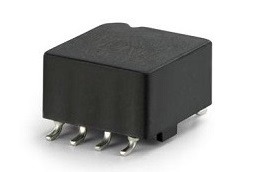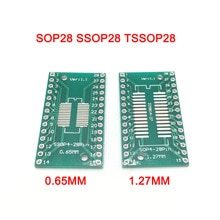#ActiveComponents
Text
youtube
#Clove#SpiceDiscovery#NaturalHealing#HerbalWonders#HealthBenefits#ActiveComponents#ExploringNature#HerbalRemedies#WellnessJourney#CloveOil#HolisticHealth#PlantPower#HealthyLiving#DiscoverClove#MedicinalHerbs#Nature'sTreasures#CulinaryHerbs#HerbalExploration#WellnessDiscovery#HiddenGems#self healing#plants#treatment#Youtube
0 notes
Text
The difference between electronic components and electronic devices
The difference between electronic components and electronic devices
The basic parts used to manufacture or assemble electronic devices are called electronic components, which are independent individuals in an electronic circuit. Electronic components can generally be divided into components and devices. What is the difference between an electronic component and a device?
Next, we will distinguish them from different perspectives.
1、Distinguish from the perspective of manufacturing
Component: Electronic products that do not change the molecular structure of the material during the manufacturing process are called components.
Devices: Products that change the molecular structure of materials during manufacturing are called devices, but the manufacturing of modern electronic components involves many physicochemical processes. Many electronic functional materials are inorganic non-metallic materials, and the crystal structure is changed during the manufacturing process. Obviously, this distinction is not scientific.
2、Distinguish from the perspective of structural units
Component: A product with a single structural mode and a single BZX84C7V5LT1G performance characteristic is called a component.
Device: A product consisting of two or more components with different performance characteristics from a single component is called a device. According to this distinction, resistors and capacitors belong to components, but the names of resistors and capacitors are confused with the concept of "devices", and the emergence of an array of resistive and capacitive components such as exclusion and capacitance, this distinction becomes unreasonable.
3、Distinguish from the response to the circuit
Current can be changed by its frequency amplitude or flow of individual components called devices; otherwise, they are called components. For example, triodes, thyristors, and integrated circuits are devices, and resistors, capacitors, and inductors are components. This distinction is similar to the international classification of active and passive components. In fact, it is so difficult to distinguish components from devices that they might as well be called components for short! What is a discrete component? Discrete components are relative to integrated circuits (ICs). In the development of technology in the electronics industry, due to the emergence of semiconductor integrated circuits, electronic circuits have two branches: integrated circuits and discrete component circuits.
ICIntegratedCircuit(ICIC) is an electronic component with circuit function, which interconnects the components and wiring required for a class of circuits such as transistors, resistors, capacitors, etc., and makes them on one or several small semiconductor wafers or dielectric substrates.
3.1 Discrete components
Discrete components are common individual electronic components such as resistors, capacitors, and transistors, collectively referred to as discrete components. A discrete component is a single, "smallest" component with no other functional unit inside.
3.2 The difference between active and passive devices.
There is such a way of classifying electronic components
ActiveComponents: Active components are components that can excite active functions such as amplification, oscillation, control of current or energy distribution, and even perform data operations and processing when energy supply is obtained. Active components include various transistors, integrated circuits (ICs), picture tubes and displays. Passive components:In contrast to active components, passive components mean that they cannot excite, amplify, oscillate, etc. The response to an electrical signal is passive and submissive, and the electrical signal passes through the electronic component according to its original fundamental characteristics. The most common resistors, capacitors and inductors are passive components.
3.3 The difference between active and passive components
According to the distinction between active and passive components in the world, mainland China is usually referred to as active and passive devices.
3.4 Active components.
Active components correspond to active components. Electronic components such as triodes, thyristors, and integrated circuits work with an excitation power source in addition to the input signal to work properly, so they are called active devices. Active devices also consume electrical energy, and high-power active devices are generally equipped with heat sinks.
3.5 Passive components.
Passive components correspond to passive components. Resistive, capacitive, and inductive components can perform the required functions when signals pass through the circuit without external excitation power, and are therefore called passive devices. Passive devices consume little electrical energy or convert electrical energy into other energy in a different form.
Circuit elements are different from connecting elements
Passive devices in electronic systems can be divided into circuit devices and connecting devices according to their circuit function.
4、The three major technologies of electronic component chips
4.1 Thick film technology
Thick film technology: on the insulating substrate, through screen printing and low temperature sintering process to produce conductive, dielectric, resistive and other functional films, functional films are thicker, generally above 10μm, electronic components in the largest consumption of thick film resistors is a typical product produced by thick film technology.
4.2 Thin Film Technology
Thin film technology originated from semiconductor integration, mainly using evaporative sputtering and etching processes to form thin films on insulating substrates to produce conductive, dielectric and resistive functional films. The thickness of functional films is typically less than 1 μm and can be as thin as 10 nm a conduction band. Electronic components fabricated on glass or ceramic substrates by thin-film technology are called thin-film components, such as thin-film circuits, thin-film resistors, thin-film single-layer capacitors, etc. Thin film components are characterized by precise control of resistance and capacitance values, wide range of values, good temperature and frequency characteristics, and can operate in the millimeter wave frequency band. And they are more integrated and smaller in size.
The manufacturing flexibility of thin film technology makes it ideal for custom product manufacturing or low-volume, multi-variety product manufacturing with short manufacturing cycles. However, the equipment used in thin-film processes is expensive and production costs are high. Thin film components are generally used in high frequency electronic circuits such as optical, microwave and wireless communications. Or in sensing, medical and biotechnology fields.
4.3 Multi-layer chip technology
Component chip bodies are manufactured by screen printing process and high temperature co-fired process. The number of layers of interactive overprinting can reach 1000, the thickness of dielectric film and conductive layer can be between 1μm to several hundred microns, and the thickness of conductive metal layer can be between 0.1 and 5 microns...
4.4 Multi-layer chip assembly structure
Using multilayer chip technology, various electronic components can be manufactured using different functional materials, such as:
Multilayer chip ceramic capacitors MLCC, multilayer chip ceramic inductors MLCI, multilayer chip varistors MLCV, and chip thermistors, etc. All of them are manufactured using multilayer chip technology. The biggest advantage of multilayer chip technology is that the design is simple and standardized, easy to manufacture in large scale and high automation, and can achieve very low production cost.

Prepare your supply chain
Buyers of electronic components must now be prepared for future prices, extended delivery time, and continuous challenge of the supply chain. Looking forward to the future, if the price and delivery time continues to increase, the procurement of JIT may become increasingly inevitable. On the contrary, buyers may need to adopt the "just in case" business model, holding excess inventory and finished products to prevent the long -term preparation period and the supply chain interruption.
As the shortage and the interruption of the supply chain continue, communication with customers and suppliers will be essential. Regular communication with suppliers will help buyers prepare for extension of delivery time, and always understand the changing market conditions at any time. Regular communication with customers will help customers manage the expectations of potential delays, rising prices and increased delivery time. This is essential to ease the impact of this news or at least ensure that customers will not be taken attention to the sudden changes in this chaotic market.
Most importantly, buyers of electronic components must take measures to expand and improve their supplier network. In this era, managing your supply chain requires every link to work as a cohesive unit. The distributor of the agent rather than a partner cannot withstand the storm of this market. Communication and transparency are essential for management and planning. In E-energy Holding Limited, we use the following ways to hedge these market conditions for customers:
Our supplier network has been reviewed and improved for more than ten years.
Our strategic location around the world enables us to access and review the company's headquarters before making a purchase decision.
E-energy Holding Limited cooperates with a well -represented testing agency to conduct in -depth inspections and tests before delivering parts to our customers.
Our procurement is concentrated in franchise and manufacturer direct sales.
Our customer manager is committed to providing the highest level of services, communication and transparency. In addition to simply receiving orders, your customer manager will also help you develop solutions, planned inventory and delivery plans, maintain the inventory level of regular procurement, and ensure the authenticity of your parts.
Add E-energy Holding Limited to the list of suppliers approved by you, and let our team help you make strategic and wise procurement decisions.
0 notes
Link
0 notes
Text
Buy Electronics Parts from our Store! http://www.ibselectronics.com/ibsstore/





0 notes
Photo

10pcs SOP28 TSSOP28 DIP28 SMD to DIP IC Adapter Converter Socket PCB Board Module Adapter Plate 0.65mm 1.27mm Integrated Circuit ---------- Price : 1.25$ ---------- For buy this product Go to Website : BestWebShop.Net ---------- #activecomponents ---------- #BestWebShop#Shop#OnlineShop ---------- https://bestwebshop.net/index.php/product/10pcs-sop28-tssop28-dip28-smd-to-dip-ic-adapter-converter-socket-pcb-board-module-adapter-plate-0-65mm-1-27mm-integrated-circuit/?feed_id=1463&_unique_id=5ee3d6cc8060e
0 notes